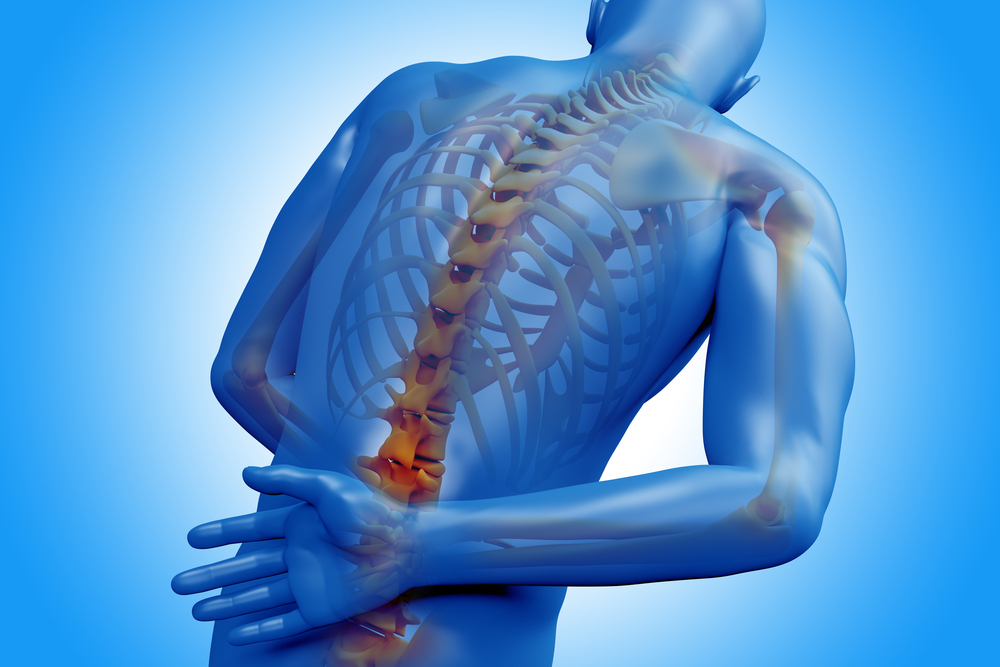Spinal Mobility Problems Common, and Worsen Over Time, Swedish Study Shows

Problems in spinal mobility are common in people living with ankylosing spondylitis (AS) for more than 10 years, a Swedish study shows.
The most prevalent problem is difficulty in bending the spine sideways, which associates with worse mobility problems later on.
The study, “Long‐term spinal mobility in ankylosing spondylitis: a repeated cross‐sectional study,” was published in the journal Arthritis Care & Research.
Ankylosing spondylitis (AS) is a form of arthritis that primarily affects the spine, causing inflammation of the spinal joints (vertebrae) that can lead to severe, chronic pain and stiffness. In more advanced cases, the disease can eventually progress to ankylosis — new bone formation in the spine that leads to the ossification of ligaments, and causes sections of the spine to fuse.
The hallmark sign of AS is inflammation of the sacroiliac joints, where the base of the spine (the sacrum) meets the pelvis (iliac bone). This is accompanied by decreased spinal mobility.
As a lifelong disease, AS typically begins to show symptoms in early adulthood, which gradually worsen. But severity varies from person to person.
Because the decrease in spinal mobility is a slow process which worsens over decades, studies on the condition are scarce, and have been done primarily with the use of old records.
Now, researchers took advantage of a Swedish database of spinal mobility records in AS patients spanning nearly 40 years, to learn more. The team from the Department of Public Health and Clinical Medicine at Umeå University, in Sweden, conducted a retrospective study to evaluate the prevalence of spine movement problems in patients with long-standing disease.
They also investigated whether impaired lateral spinal flexion (LSF) — the ability to bend the spine sideways — in early-stage disease is associated with a worse prognosis. The team examined which type of reference levels were better for evaluating patient changes in spine motion: the commonly used, fixed reference values, or age-adjusted reference intervals from healthy people.
Spinal mobility data was compiled for 232 people with ankylosing spondylitis — 186 men and 46 women — who had been living with the disease for up to 45 years. This data set included 3,849 spine clinical measurements collected between 1980 and 2016.
Measurements of LSF, 10‐cm Schober test (a measure of lumbar, or lower back, spine flexion), chest expansion, and cervical rotation (head rotation) were grouped by duration of disease in 10‐year intervals — at 10, 20, 30, and 40 years of disease duration. Measurements closest to each of these intervals, and within five years before or after, were used.
These values were compared with published age‐ and height‐adjusted references, and with fixed reference values commonly used in clinical practice in Sweden.
As expected, spinal mobility was generally lower in patients than in the age-corresponding healthy population, with the proportion of those with spinal problems increasing over time.
This impairment was found in all evaluated parameters, except for chest expansion, and was especially pronounced for lateral spinal flexion.
For all disease periods, of 10 to 40 years, people with the disease had a mean LSF below the values found in 97.5% of healthy people (53% of male patients and 65% of females).
Importantly, the researchers found that reduced LSF after 10 years of disease was associated with worse ability to move the spine later on. The team compared patients with normal LSF with those with impaired LSF after 10 years of disease. Those with later impaired LSF — after a mean of 30 years of disease — experienced both worse and more frequently impaired mobility in all measurements.
In another key finding, using fixed reference values for evaluating impaired spinal mobility overestimated the proportions of patients with the condition as compared with the use of adjusted reference intervals, the investigators said.
This finding was most evident for chest expansion after 40 years of disease. Only 8% of patients were classified as having impaired spinal mobility using age-adjusted reference intervals, in contrast with 52% and 74% of patients, depending on the cut-off, using fixed reference values.
“In conclusion, impaired spinal mobility in AS is common after 10 years of disease and spinal mobility continues to deteriorate in the succeeding decades. Early impairment of spinal mobility, although often limited in absolute numbers, is associated with a worse prognosis,” the researchers said.
They explained that spinal mobility can become limited in these patients either due to the progression of structural changes, as observed in radiographic exams, or due to pain and muscular spasms caused by inflammation.
“The use of age- and height-adjusted reference intervals could significantly improve spinal mobility assessment during the course of AS disease. The use of fixed reference values lacks precision, overestimates the proportion with impaired spinal mobility in AS, must be used with extreme caution, or should preferably be avoided,” the team added.
To ease the use of adjusted references in clinical practice, computer systems may be applied to electronic patient records or national quality registers, the team suggested.






